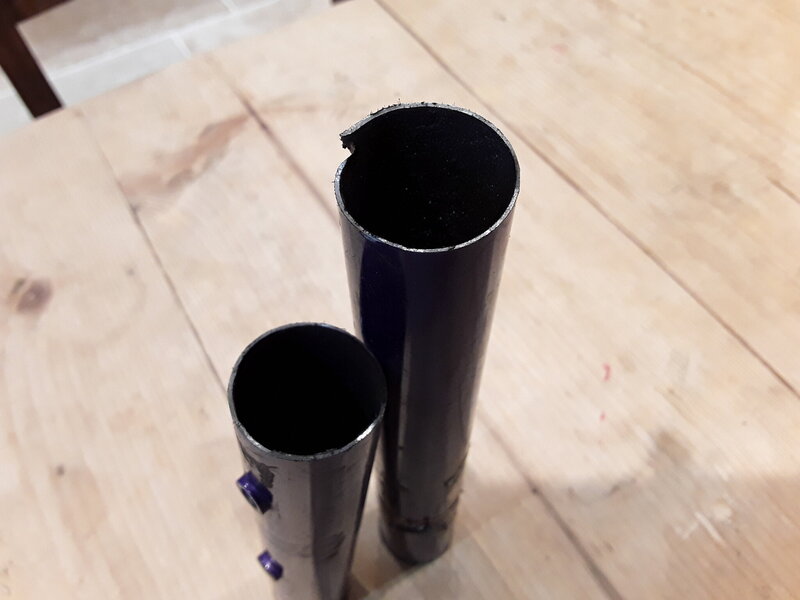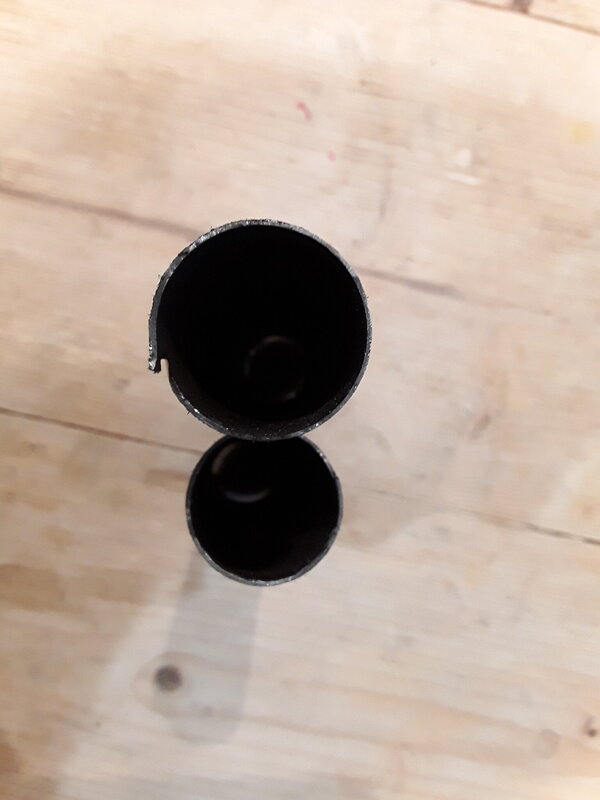I've aways been a bit concerned when it comes to powdercoating bike frames. Whilst i spent a lot of my working life around powdered parts, these were always much thicker steel than a bike frame.
Today, i found some old tange prestige tubes taken from a frame......for those you who have never considered the thickness ( or should i say thinness) of these tubes here's a picture.....its a seat tube and the walls measure out at about 0.9 / 0.6/ 0.9. mm (I will get some more accurate measurements next time im in the workshop with decent measuring gear).
Each time a bit of metal is blasted you loose a small amount....it can't be helped. The blast media makes a big difference, the guys we use change media for the job at hand, but not everybody does. Also dirty recycled media can be a problem as it may contain particles far more abrasive than the base.
So, as an experiment im going to clean these tubes up ( these were wet painted orginally) and then ask my friendly powdercoaters to blast them with say walnut shell and something more standard and more abrasive to see how much metal actually comes off.
I honestly dont know the answer, but im keen to find out! You might be i interested, especially if your about to re-powder that tatty powdercoated frame....as that's 2 cycles of blasting!
PS this frame was door-nail dead (rotted through in 2 major places ).....so no early 90s frames were really harmed in the process!
Today, i found some old tange prestige tubes taken from a frame......for those you who have never considered the thickness ( or should i say thinness) of these tubes here's a picture.....its a seat tube and the walls measure out at about 0.9 / 0.6/ 0.9. mm (I will get some more accurate measurements next time im in the workshop with decent measuring gear).
Each time a bit of metal is blasted you loose a small amount....it can't be helped. The blast media makes a big difference, the guys we use change media for the job at hand, but not everybody does. Also dirty recycled media can be a problem as it may contain particles far more abrasive than the base.
So, as an experiment im going to clean these tubes up ( these were wet painted orginally) and then ask my friendly powdercoaters to blast them with say walnut shell and something more standard and more abrasive to see how much metal actually comes off.
I honestly dont know the answer, but im keen to find out! You might be i interested, especially if your about to re-powder that tatty powdercoated frame....as that's 2 cycles of blasting!
PS this frame was door-nail dead (rotted through in 2 major places ).....so no early 90s frames were really harmed in the process!

